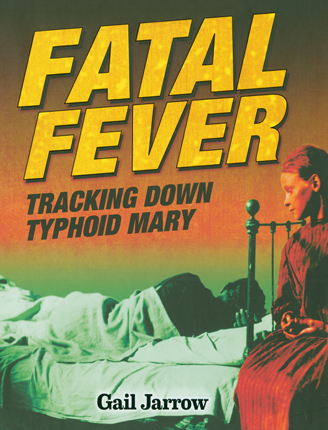Full Text Reviews: School Library Journal - 01/01/2015 Gr 5 Up—Just who was Typhoid Mary? In this second installment of a planned trilogy featuring deadly diseases, the first being Red Madness: How a Medical Mystery Changed What We Eat (Calkins Creek, 2014), Jarrow relates the account of Typhoid Mary, also known as Mary Mallon, and places it in historical context, explaining the devastating effects of typhoid fever. A symptomless carrier of typhoid, Mallon was a cook who inadvertently infected numerous people and was responsible for many deaths. Jarrow skillfully weaves Mallon's story into that of two other key figures working to fight and contain the disease: George Albert Soper, a sanitation engineer and typhoid expert; and Sara Josephine Baker, a doctor working at the New York City Department of Health. Citing newspaper articles, courtroom documents, and the personal accounts of several doctors, Jarrow acts as a medical detective, following the lives of Mallon, Soper, and Baker while illuminating a fascinating chapter in public health history. The work of Soper and Baker led to a dramatic decrease in typhoid cases as well as other infectious diseases. Mary, sadly, believed that she neither carried typhoid germs nor that she was responsible for outbreaks and spent most of her life virtually imprisoned on North Brother Island in New York's East River. A nonfiction page-turner relying upon extensive research and copious source notes, this is a fantastic addition to any library.—Ragan O'Malley, Saint Ann's School, Brooklyn, NY - Copyright 2015 Publishers Weekly, Library Journal and/or School Library Journal used with permission. Booklist - 02/15/2015 *Starred Review* The name Typhoid Mary lives on, but those of George Soper, Sara Josephine Baker, and Mary Mallon are relatively unknown. In this thoroughly researched book, Jarrow tells their intertwined stories. Beginning in 1906, Soper, an engineer and chemist known as a “germ detective,” tied several typhoid outbreaks to Mallon, an Irish cook who was a typhoid carrier. Baker, a public health doctor in New York City, led the Department of Health’s efforts to test Mallon for the disease. Feisty, uncooperative, and apparently healthy, Mallon repeatedly resisted officials and never accepted that she had infected dozens of people, including several who died. After a dramatic opening scene in which Mallon flees from health officials, Jarrow backtracks to 1903, when Soper investigated a typhoid outbreak in Ithaca, New York. Here she introduces the disease, its consequences for the community, and the growing role of government in public health, topics she later develops more fully. The writing is lucid, well organized, and informative. The book’s large format allows for excellent reproductions of the many period photos, prints, and documents. Readers who are curious about Typhoid Mary, including those who enjoyed Julie Chibbaro’s historical novel Deadly (2011), will find this an absorbing account of what actually happened. - Copyright 2015 Booklist. Bulletin for the Center... - 04/01/2015 By the first decade of the twentieth century, the Salmonella typhi bacterium had been identified, the transmission of typhoid fever through contact with infected human fecal matter was understood, and the need for public sanitation was recognized. Why, then, did America continue to experience deadly outbreaks? Jarrow follows the tribulation of the disease’s most notorious-and victimized-carrier, Mary Mallon, to reveal just how stubborn an issue public health can be, and how the rights of an individual can conflict with the welfare of the community. The account opens with the work of George Soper, a respected sanitary engineer who helped Ithaca, New York and Cornell University to halt a current epidemic and prevent a future one. Later called upon to investigate an outbreak within a well-to-do family, Soper traced a series of afflictions to an apparently healthy cook and worked with public health officials to put her in quarantine. Mallon, however, fought her incarceration tooth and nail, eventually obtaining release from exile on North Brother Island, only to be re-apprehended when she broke the terms of her release and infected others years later. Jarrow limns Mallon with respect and sympathy, suggesting just how difficult it would be for an uneducated, asymptomatic woman to believe she could be responsible for suffering and death. However, she makes clear the responsibility of carriers to adhere to hygiene protocols (and even occupational limitations) to secure the common good. Three substantive insets discuss the disease, asymptomatic carriers, and carriers contemporary to Mallon who were never incarcerated. Period photographs, a timeline of Mallon’s story, a glossary, source notes, a bibliography, suggestions for further research, and an index are included. EB - Copyright 2015 The Board of Trustees of the University of Illinois. Loading...
|




